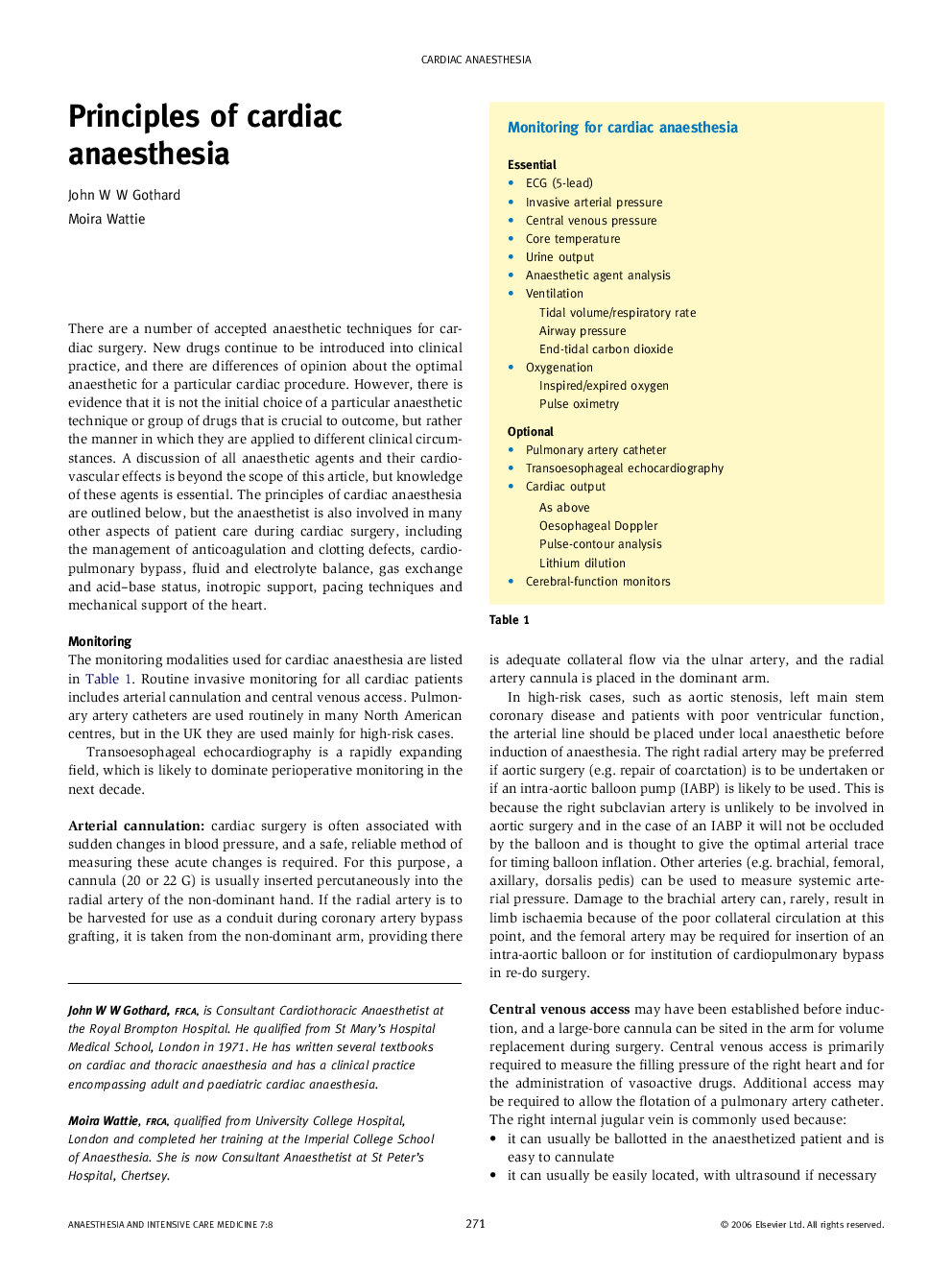| Article ID | Journal | Published Year | Pages | File Type |
|---|---|---|---|---|
| 2743791 | Anaesthesia & Intensive Care Medicine | 2006 | 6 Pages |
There are a number of accepted anaesthetic techniques for cardiac surgery. New drugs continue to be introduced into clinical practice, and there are differences of opinion about the optimal anaesthetic for a particular cardiac procedure. However, there is evidence that it is not the initial choice of a particular anaesthetic technique or group of drugs that is crucial to outcome, but rather the manner in which they are applied to different clinical circumstances. A discussion of all anaesthetic agents and their cardiovascular effects is beyond the scope of this article, but knowledge of these agents is essential. The principles of cardiac anaesthesia are outlined below, but the anaesthetist is also involved in many other aspects of patient care during cardiac surgery, including the management of anticoagulation and clotting defects, cardiopulmonary bypass, fluid and electrolyte balance, gas exchange and acid–base status, inotropic support, pacing techniques and mechanical support of the heart.
